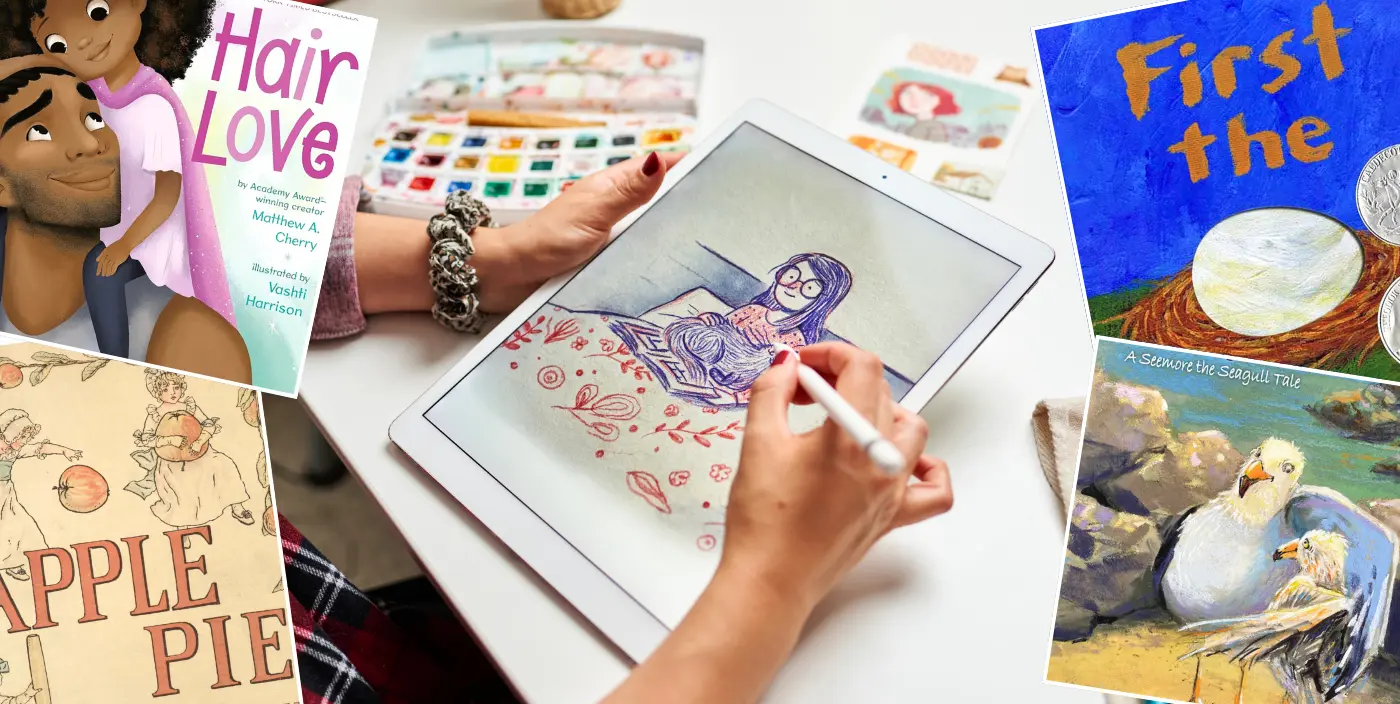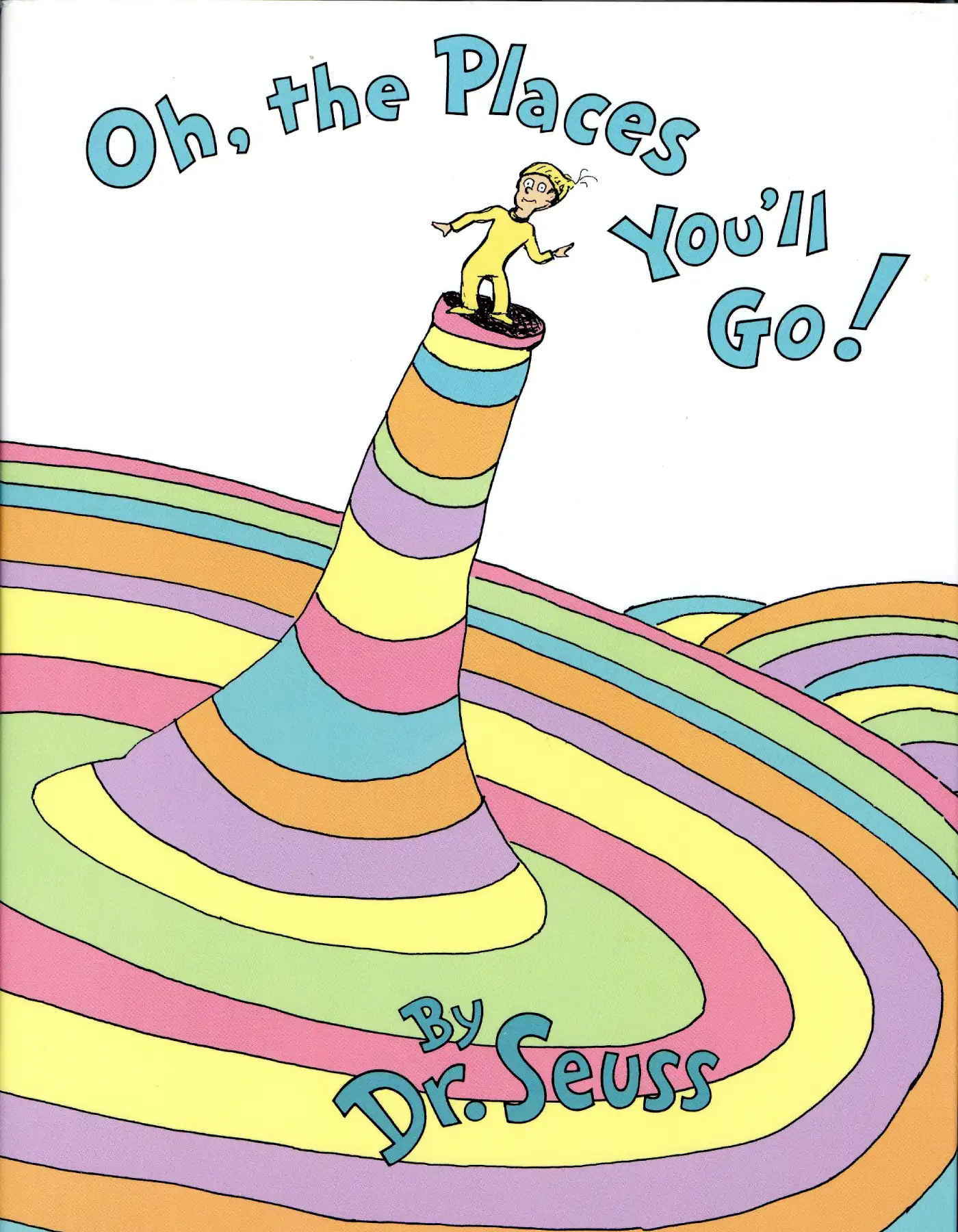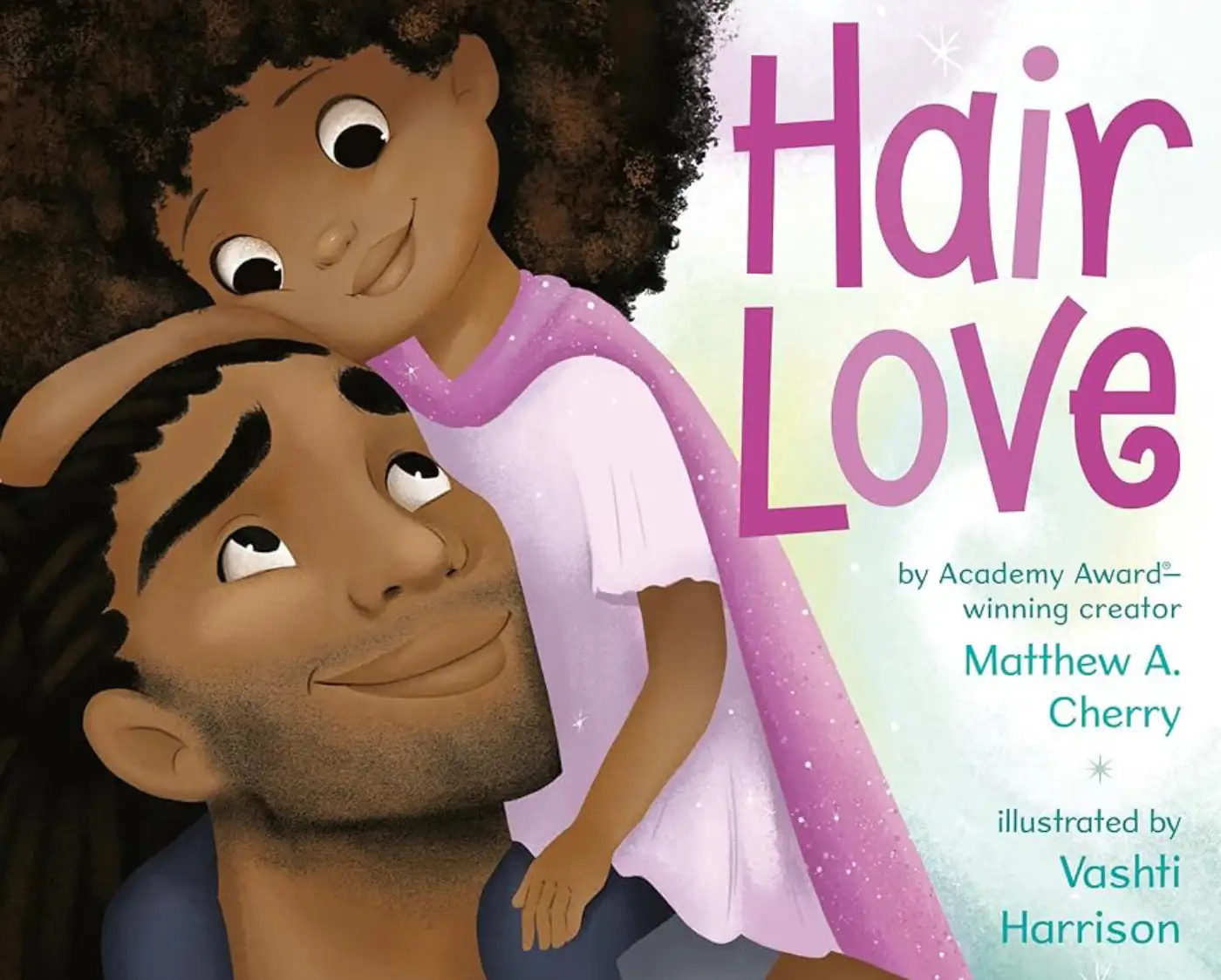Author-Illustrator Harmony: How to Guide Your Children’s Book Illustrator

If you’re an author planning on illustrating your children’s book, there are some important things you need to communicate with your illustrator. Clear instructions will ensure your story leaps off the page just as you imagined.
Successful children’s book illustrations come in many forms, but they all share certain qualities that make them exceptional. They resonate with children by being visually appealing and emotionally engaging. They help tell the story in a way that words alone cannot. The right balance between visual and textual storytelling is what makes a children’s book memorable and beloved.
Starting with some helpful tips
If you’re not an illustrator, it’s best not to illustrate your books- leave it to the professionals to ensure the highest quality!
Do not hire an illustrator who lacks experience in children’s books. This could result in illustrations that don’t effectively support the text, potentially detracting from the overall appeal and impact of the book.
Avoid illustrations that simply duplicate the text; instead, use them to visually narrate your story. However, this doesn’t mean that you should add too many illustrations. They should complement rather than overshadow it. Otherwise, it can lead to confusion and a cluttered narrative.
Ensure that the illustrations align with the text or story.
Avoid using the same viewpoint repeatedly in the illustrations; instead, vary angles and perspectives to provide a dynamic visual experience that complements the story’s progression.
Simplify your illustrations especially for younger children by avoiding overly abstract designs. Clear, straightforward visuals make it easier for them to understand and engage with the story, while highly symbolic or ambiguous imagery will make it a challenge for them to interpret the meaning.
How many illustrations should a children’s book have?
The number of illustrations in a children’s book varies based on the book’s length, target age group, and story requirements. Your illustrator should be aware of this key point. For board books aimed at ages 0-3, there are typically illustrations on every page, with a standard book containing 12-20 pages and an equal number of illustrations. Picture books for ages 3-7 often feature illustrations on every page or every other page, usually amounting to around 12-16 illustrations in a 24-32 page book. Early readers for ages 5-8 balance text and illustrations, with an illustration every few pages, leading to approximately 10-20 illustrations in a 32-64 page book. Chapter books for ages 7-10 have fewer illustrations, often one per chapter or a few scattered throughout, resulting in 5-15 illustrations in books ranging from 80-150 pages. The key is to ensure that the number of illustrations enhances the storytelling and aligns with the target age group’s attention span and comprehension level.
Types of illustrations
It’s important to provide your illustrator with specific instructions regarding the type of illustrations required for each page.
Spot illustrations
Simple images without backgrounds, highlighting a character or object.
Vignette illustrations
Provide more context and background details than spot illustrations, fading at the edges, and can depict a series of events or the passage of time without occupying a full page.
Single / full page illustrations
Large, detailed images that occupy an entire page. They can be accompanied by text on one page and stand alone on the opposite page.
Double-page illustrations
Extend to the edges of the pages.
Where you want your text to be placed
It’s essential to inform the illustrator in advance about where you want the text to be placed on the pages, especially if you want the text to be placed over the illustrations, as this allows them to reserve space in the artwork for clear visibility of the text, including specifying the font and size. Alternatively, if you prefer illustrations on one page with text on a separate blank page, the illustrator can fully utilize the illustration space accordingly.
Different illustration styles
Discuss with your illustrator which style you would like your illustrations to be. Here’s a look at common illustration styles:
Cartoonish
Characterized by exaggerated features, bold outlines, and vibrant colors, often used in humorous or narrative-driven storytelling. Ideal for whimsical adventures, these illustrations vividly depict playful stories of friendship, exploration, and exciting journeys, resonating with the imaginative spirit of childhood.

Image source: Dr. Seuss’s “Oh, the Places You’ll Go!”
Realistic
Realistic illustrations in children’s books aim to accurately depict subjects with lifelike detail, shading, and texture, appealing to readers with a visual style that mirrors reality. This approach is often used in educational books or stories that emphasize authenticity and factual representation, offering young readers a clear and informative visual experience.

Image source: “The Undefeated”- Kadir Nelson
Wimmelbuch style
Wimmelbuch illustrations, originating from Germany, are characterized by densely packed scenes filled with intricate details, characters, and activities that encourage exploration. Unlike traditional illustrations with a single focus, Wimmelbuch invites readers to discover multiple stories unfolding simultaneously within a single frame. These are ideal for curious kids and toddlers, which helps them learn new words, recognize objects and create imaginative narratives.

Image source: “Wimmelbuch, The Land of Fairy Tales”- Anne Suess
Whimsical
This illustration style leans heavily on the fantastical, emphasizing creativity and imagination over realism. It creates a playful and dreamy atmosphere that inspires young readers to explore imaginative worlds and characters.

Line drawing and sketch
While not typically found in most children’s books, line-drawn illustrations are essential for those that also serve as coloring books. This style relies on simple lines with little to no shading, encouraging children to color in the images themselves.
A related style is sketch drawing, which usually involves one color, often black, and includes more intricate details. This type of illustration was more prevalent in older children’s books, giving them a classic and timeless feel.

Image source: “The Water Nixie”- Grimm’s Fairy Tales
Vintage
Vintage-style illustrations in children’s books evoke nostalgic charm with muted colors, detailed line work, and classic design elements. They capture the essence of past eras, making them ideal for stories with historical settings or timeless messages. This style is typically created with a pencil.

Image source: “A Apple Pie”- Kate Greenaway
Bold and bright
These illustrations are characterized by their vivid colors, strong lines, and high contrast, capturing attention and sparking excitement. This energetic style is perfect for lively, adventurous stories, helping to convey dynamic action and vibrant emotions that engage young readers and bring the narrative to life.

Image source: “SamSam, mission secrete”- Serge Bloch
Muted
unlike bold bright illustrations, this style uses muted tones, high contrast, and specific shapes and colors to evoke a powerful atmosphere. They skillfully convey a spectrum of emotions – from melancholy to warmth – through nuanced use of light and shadow. Ideal for capturing complex emotions and atmosphere.

Image source: “I Love You to the Moon and Back”- Tim Warnes
How to decide which medium you should use?
Be sure to discuss your preferred illustration medium with the illustrator and consider exploring different media to find the best match for your story.
Paint
Watercolor: is often used in children’s stories for its soft, whimsical, and gentle appearance. It can evoke a sense of warmth, nostalgia, and imagination, making it well-suited for illustrating scenes that are dreamy, magical, or comforting. It’s best used for fairytales and bedtime stories.
Acrylic: Acrylics are another popular medium used in children’s stories for their versatility and vibrant colors. Unlike watercolors, acrylic paints provide bold and opaque colors, which can create illustrations with strong contrasts and vivid details. This makes acrylics suitable for depicting scenes that require a more dynamic or expressive visual style, such as action-packed sequences or scenes with bold characters and settings.
Oil paint: while less common than watercolor or acrylic in children’s stories due to its longer drying time and more complex handling, can still be used effectively for creating richly detailed and textured illustrations. Its slow drying properties allow for blending and layering colors with precision, making it suitable for intricate and realistic depictions of characters, landscapes, and intricate details in children’s books. Oil paint can lend a classic, timeless feel to illustrations, with its depth of color and ability to capture subtle light and shadow effects.
Gouache: is a versatile medium used in children’s stories for its opaque and matte finish, which allows for vibrant colors and detailed illustrations. Unlike watercolor, gouache dries to a smooth and flat surface, making it ideal for creating bold and expressive images with precise details. Its ability to be reactivated with water even after drying allows for corrections and adjustments, making it suitable for illustrating scenes that require both meticulous details and vibrant colors.


Drawing – Colored
Chalk: its ability to blend easily on paper or chalkboards allows for expressive and playful art styles, ideal for capturing the imagination of young readers with its nostalgic and tactile appeal.
Colored pencils: are famous for their precise control and ability to create detailed, vibrant illustrations. Perfect for portraying characters, landscapes, and intricate scenes.
Crayons: their waxy texture allows for bold strokes and blending, which can evoke a sense of creativity and spontaneity in storytelling. Crayon illustrations often have a textured and tactile quality that appeals to young readers.
Pastels: their soft, blend-able texture and velvety finish make them ideal for creating expressive and textured artwork.



Drawing – Black and grey
Charcoal: is often chosen for its bold, expressive qualities in children’s stories, ideal for creating dramatic and textured illustrations with deep contrasts and rich shading.
Ink: its versatility allows for various techniques, from intricate pen work to dynamic brush strokes, making it suitable for capturing both fine details and expressive gestures in storytelling.

Image source: “Alice’s Adventures in Wonderland”- John Tenniel
Collage
Involves the combination of different materials such as paper, fabric, and found objects to create layered and textured illustrations. It offers a tactile and whimsical quality that can bring characters and settings to life with a playful and imaginative flair.

Image source: “The Very Hungry Caterpillar”- Eric Carle
Multimedia
Various mediums, why not? This approach allows artists to create dynamic and interactive illustrations that blend realism with imaginative elements, enhancing the storytelling experience.
Digital media
Digital media is widely utilized in children’s stories for its flexibility and ability to create vibrant, detailed illustrations with precision and ease. Artists can use digital tools to simulate traditional mediums like watercolor, acrylic, or pencil, offering a range of styles and effects to suit different storytelling needs. Digital illustrations can also incorporate animation, interactive elements, and dynamic compositions, enhancing engagement and storytelling dynamics for young readers.
Digital painting: one of the most common digital illustrations are the ones hand-drawn created with digital tools like a tablet. One of its greatest advantages is its adaptability to virtually any style, allowing artists to mimic various traditional mediums with remarkable accuracy and flexibility.
Vector illustrations: are widely used in children’s stories for their crisp and clean lines, scalability without loss of quality, and versatility in creating simple yet impactful visuals. They are ideal for depicting bold characters, vibrant environments, and clear, easily recognizable shapes, making them well-suited for educational materials and storytelling that require clarity and visual appeal. Vector illustrations also allow for easy editing and resizing, ensuring consistency across different formats and platforms. Their straightforward style and ability to convey information clearly make them a popular choice in children’s book illustration and design.


Color palette
Inform your illustrator about the color palette you envision for your book. Providing a clear direction on colors helps ensure the illustrations align with the mood, theme, and overall feel of your story, creating a cohesive visual narrative.
Considerations for Book Dimensions and Illustration Resolution
Specify the physical size of the book, such as trim size (e.g., 8.5″ x 11″, 9″ x 9″), ensuring illustrations are scaled appropriately for printing. Discuss any preferences for landscape or portrait orientation based on your storytelling and design preferences.
Also, clarify the required resolution for illustrations to ensure high-quality printing. Typically, illustrations for print books should have a resolution of 300 DPI (dots per inch) to maintain clarity and detail. Discuss technical specifications with your illustrator to meet printing standards.
Don’t forget to discuss printing specifications such as color profiles, paper types, and finishing options (e.g., matte or glossy) to ensure illustrations are optimized for the desired visual impact and quality in print. Simultaneously, consider adaptations for digital and eBook formats, ensuring illustrations maintain clarity and visual appeal across different screen sizes and formats.
End note
Effective communication is paramount for ensuring the success of a children’s book project. Clear and thorough communication between the author and illustrator fosters a cohesive vision and enhances the quality of illustrations. This collaborative approach not only ensures that the artwork aligns with the narrative but also optimizes the reading experience across various formats. By maintaining open lines of communication throughout the creative process, authors and illustrators can work together seamlessly to produce a captivating and impactful children’s book that resonates with young readers.




